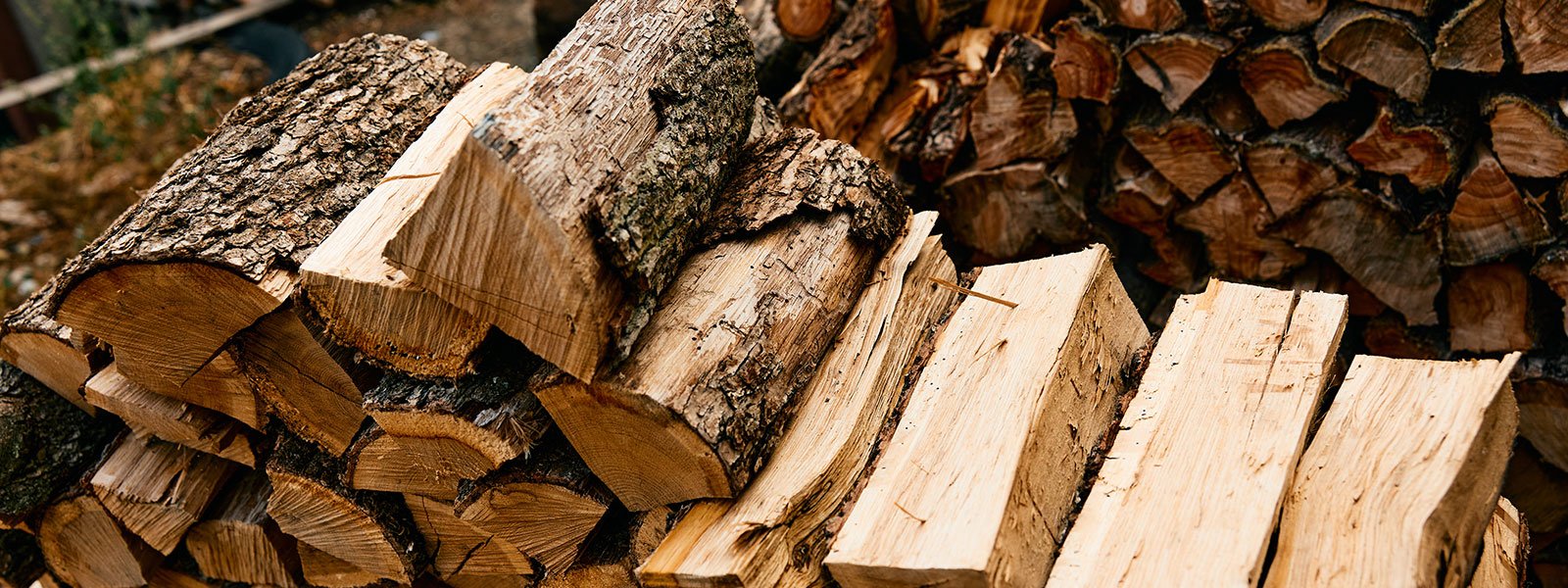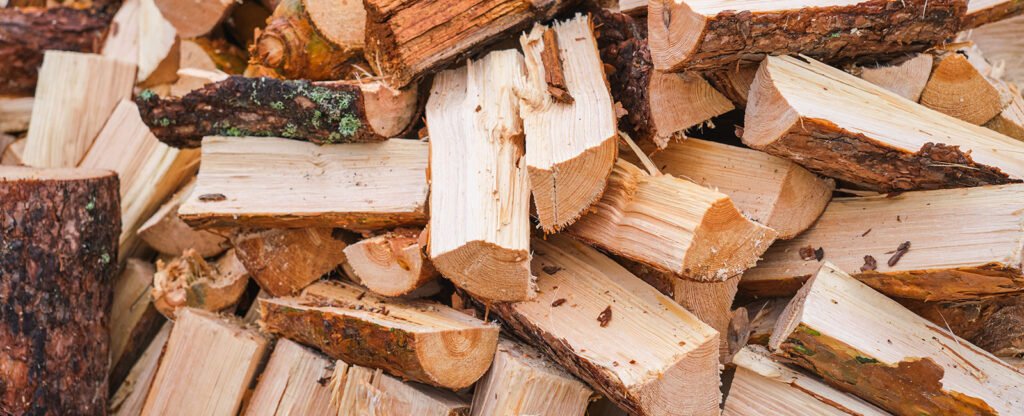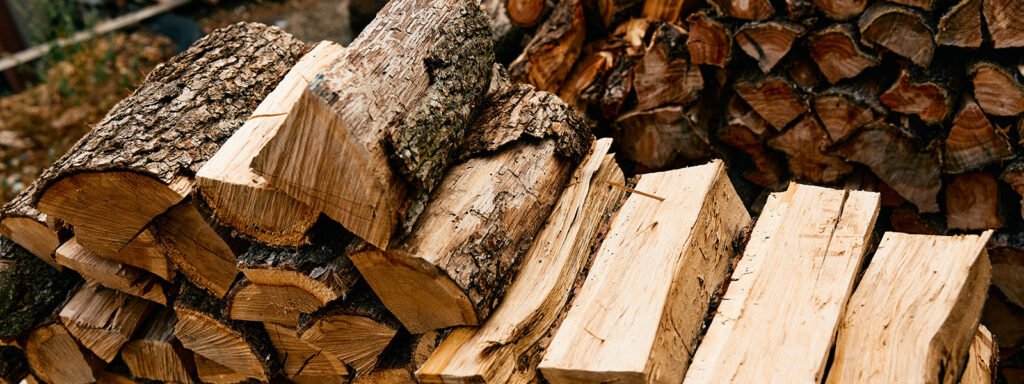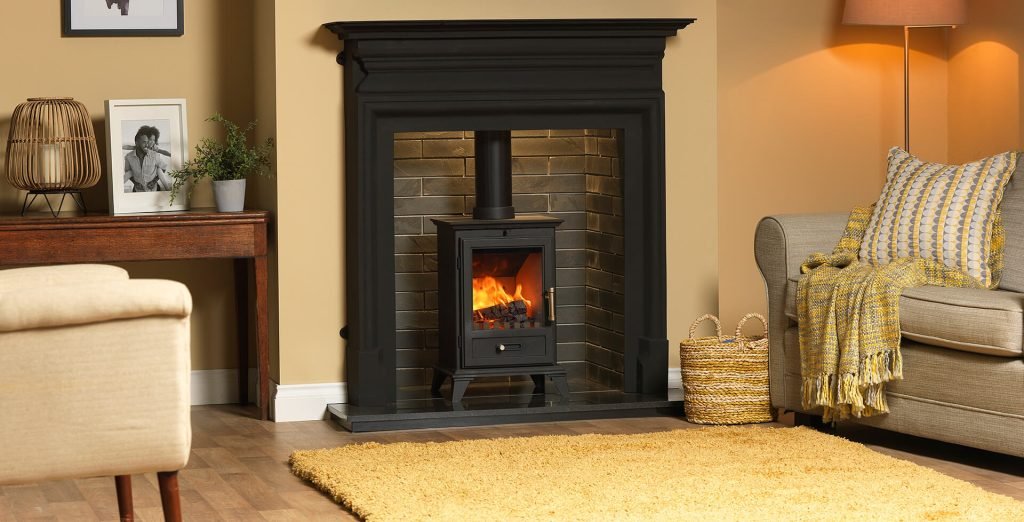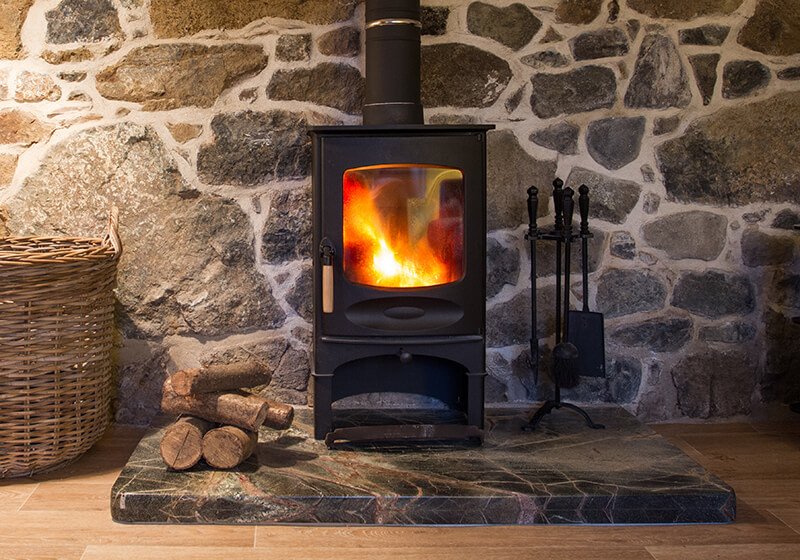Table of contents:
Storing Firewood Correctly: A Seasonal Guide for UK Gardens
There’s nothing quite like lighting a fire on a crisp evening. But if your logs are damp, smoky, or hard to ignite, it can turn a cosy moment into a frustrating chore.
Properly storing firewood is essential not just for ease of use, but for safety, efficiency, and keeping your garden looking neat and well-maintained.
Why Proper Storage Matters
Storing firewood correctly is just as important as choosing the right log burner.
Poorly stored wood can absorb moisture, become difficult to light, smoke excessively, or even harm your stove and chimney.
In the UK, where dampness is common, good storage practices are essential to ensure your logs remain dry and burn efficiently.
What Does “Correctly Stored” Mean?
When we talk about “correctly stored” firewood, we’re referring to logs that have been given the right conditions to dry out (or season) and stay that way. This ensures they burn hot, clean, and safely. This is better for your stove, your chimney, and the air you breathe.
- Moisture content below ~20 %: Dry wood should ideally reach a moisture content of 20 % or less.
- Good airflow: Wood stacks must allow air to circulate around logs.
- Shelter from rain, not airtight: Protect from direct rain but allow sides to breathe.
- Off the ground: Avoid placing logs directly on soil or ground.
Seasonal Guide: What to Do, Month by Month
Spring (March – May)
- Start stacking freshly cut wood: Logs felled earlier in the year begin their season.
- Split logs down: Break large logs into smaller pieces (<10 cm diameter if possible) to speed drying.
- Choose the stack location: A sunny, breezy spot is ideal.
- Raise the stack: Use pallets or bearers to lift wood off the ground.
Summer (June – August)
- Cover the top: Use a waterproof sheet or roof, but leave sides open for ventilation.
- Monitor drying: Check for cracks, bark loosening, lighter weight, and a hollow sound when tapping logs — signs of dryness.
- Restack if necessary: Loosen overly tight stacks to boost airflow.
Autumn (September – November)
- Bring wood closer to the house: Move seasoned logs nearer, but still outdoors.
- Cover more thoroughly: As rainfall increases, ensure tops are well sheltered.
- Select logs for burning: Use fully seasoned, drier logs first.
Winter (December – February)
- Store small amounts indoors: Bring in only what you’ll use over the next couple of days to avoid damp or pests indoors.
- Check stacks regularly: Ensure water isn’t pooling or soaking into lower logs.
- Avoid burning unseasoned wood: Wet logs cause smoke, tarring, and extra creosote in your chimney.
Common Firewoord Storage Mistakes to Avoid
Many homeowners store firewood in ways that seem convenient but actually lead to poor burning, wasted wood, and increased maintenance.
Here are some of the most common errors.. and how to avoid them.
1. Stacking Too Tightly
While a neat, compact stack might look tidy, it prevents air from circulating properly around the logs. Without airflow, moisture gets trapped and can lead to mould or slow seasoning.
Our tip: Make sure to leave small gaps between logs and alternate their direction occasionally to improve ventilation.
2. Stacking Too High
Tall stacks can become unstable, especially during wet and windy UK winters. If the pile topples, not only can logs become damaged or wet, but there’s a real safety risk to people and pets.
Our tip: Keep your wood stacks no higher than about 4 feet (1.2 metres), and if you’re stacking against a wall or fence, make sure it’s secure.
3. Covering the Sides Completely
Many people use tarpaulin to protect their wood, but wrapping it up completely is a mistake. Airtight covers trap moisture, turning your carefully stacked logs into soggy timber.
Our tip: Instead, only cover the top of your stack — using a waterproof sheet or roof — and keep the sides open to allow airflow.
4. Storing Logs on the Ground
Wood that sits directly on grass, soil, or concrete can quickly absorb ground moisture, especially during the wetter months. This not only prevents seasoning but can cause rot and attract pests.
Our tip: Always store firewood on a raised base such as a wooden pallet, a log store with a slatted floor, or purpose-built shelving.
5. Storing Too Close to Fences or Walls
Positioning your log stack against a fence or wall might seem space-saving, but it significantly limits airflow on one side of the stack. The trapped moisture encourages fungal growth and slows down the drying process.
Our tip: Aim to leave at least a few inches between the back of the stack and any solid surfaces to allow cross-ventilation.
6. Using Unsuitable Storage Containers
Plastic storage boxes, wheelie bins, or sealed sheds might seem like a good way to keep wood dry, but they can cause more harm than good. Without ventilation, these containers act like greenhouses — heating up during the day and trapping condensation overnight.
Our tip: Stick to breathable, open-sided log stores that allow for both shelter and air movement.
Checking Dryness & Readiness to Burn
Moisture meter: Use a moisture meter — target ≤20 % for efficient burning.
Visual cues: Look for split ends, looser bark, pale wood colour.
Sound test: Knock two logs — a hollow “tap” suggests dryness, a dull thud suggests moisture.
Thinking Ahead: What Questions Should You Ask?
Do I have enough space and exposure in my garden for good air circulation?
Can I elevate my log stack sufficiently from damp ground?
Am I protecting from rain without blocking airflow?
Can I rotate wood use so older, seasoned logs are used first?
Expert Advice from Flue & Flame
At Flue & Flame, our experienced stove installers have seen the difference dry, well-stored logs make. Here’s our advice:
- Plan your log store early: Build or buy a log store in late spring so it’s ready before your firewood arrives.
- Stack with care: Use a crisscross or “alternating” pattern at ends to add stability yet allow airflow.
- Use the “first in, first out” rule: Always burn the oldest, driest logs first.
- Inspect before burning: Even “dry” wood can absorb moisture — check it before lighting.
- Consider split-seasoning: If fully seasoning is difficult, partially season wood and finish drying under cover closer to burning time.
Final Thoughts
Storing firewood correctly is not just about stacking logs, it’s about timing, airflow, protection, and continual care through the seasons.
With the right method, you’ll enjoy:
- Cleaner burning
- Easier lighting
- Less smoke and soot
- A safer, healthier chimney
Do you have space in your garden for an ideal log store? Or challenges such as shade or damp ground? Let’s talk through your situation — we can help you design a storage plan tailored to your home.

Build your perfect log burner installation quote here
